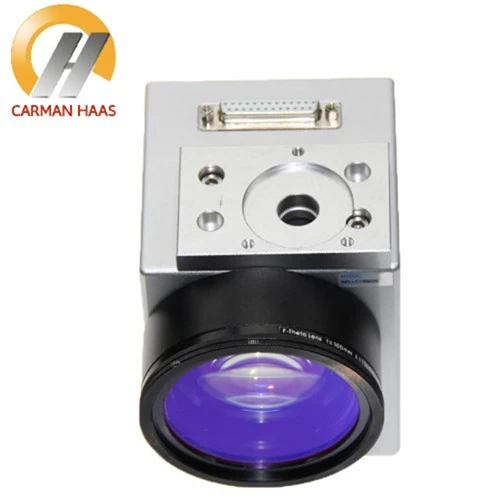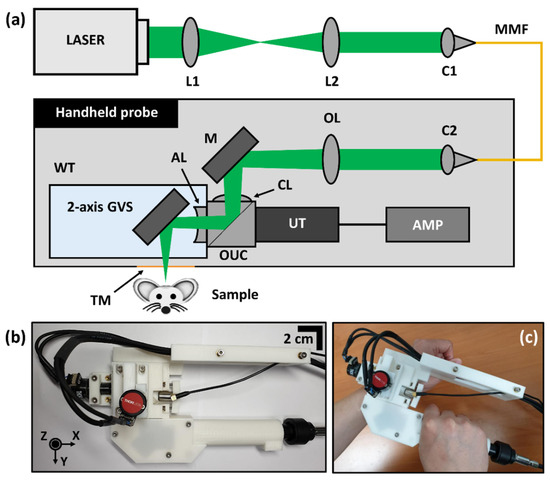Exactly How a Galvanometer Scanner Enhances Efficiency in Laser Scanning Technologies
The integration of galvanometer scanners in laser scanning innovations stands for a pivotal improvement in precision engineering. By promoting rapid and accurate modifications of laser beam of light direction, these devices substantially boost functional effectiveness across various applications, from clinical imaging to commercial inscription.
Understanding Galvanometer Scanners
A galvanometer scanner is an innovative tool that leverages electro-magnetic concepts to accomplish exact angular motion of mirrors or other reflective surface areas. These scanners operate via the communication of an electrical current and a magnetic area, making it possible for fast and exact placing. This technology is necessary in applications needing high-speed scanning, such as laser engraving, optical interaction, and clinical imaging.

Galvanometer scanners are frequently characterized by their rapid response times and high angular resolution, making them suitable for applications that require fast motions and accurate positioning. Their reliability and performance make them a vital component in contemporary laser scanning innovations, contributing significantly to improvements in various areas, consisting of production, healthcare, and telecommunications.
Device of Laser Beam Of Light Control

The control mechanism depends on closed-loop feedback systems that constantly check the beam of light's position. The signals from optical sensors offer real-time data to the control system, permitting for rapid adjustments to maintain accuracy. This is essential in applications where also slight deviations can endanger the top quality of the check or etching.
In addition, the galvanometer's response time is critical; high-speed motors make it possible for quick motions, making sure that the laser beam of light can rapidly map intricate patterns or execute elaborate procedures. The combination of digital signal processing additionally improves the responsiveness and accuracy of the galvanometer scanner. Overall, the mechanism of laser beam control through galvanometer scanners exemplifies the blend of sophisticated engineering and innovation, yielding high-performance end results in laser scanning applications.
Benefits of Enhanced Accuracy
Boosted accuracy in laser scanning innovations offers considerable advantages throughout various applications, from commercial production to medical treatments. The combination of galvanometer scanners enables extremely accurate light beam positioning, which is important for jobs requiring thorough detail. This improved accuracy ensures that the laser can target details areas with marginal inconsistency, leading to premium high quality end results.
In commercial contexts, accurate laser scanning causes improved product uniformity and lowered material waste. Parts manufactured with high accuracy are much less likely to call for rework, therefore enhancing efficiency and reducing functional expenses. In a similar way, in medical applications, the accuracy of laser treatments can significantly influence patient results. For instance, in laser surgery, accurate targeting lessens damage to surrounding tissues, resulting in quicker recovery times and less difficulties.
Furthermore, enhanced precision facilitates innovative applications such as 3D imaging and microfabrication, where even minute inaccuracies can lead to considerable mistakes. By offering reputable and repeatable laser positioning, galvanometer scanners add to the overall performance and performance of laser systems. In recap, the advantages of improved precision not just boost operational efficiency however also elevate the criteria of top quality and safety in numerous fields.
Applications in Different Industries
The adaptability of galvanometer scanners in laser scanning modern technologies prolongs across numerous markets, each profiting from the accuracy they offer. In the medical field, these scanners are crucial in applications such as laser surgical treatment and imaging, enabling very exact targeting of cells while lessening damage to bordering locations - galvanometer scanner. Their quick action and fine resolution are crucial in generating high-grade outcomes
In the manufacturing sector, galvanometer scanners enhance processes like laser inscription and cutting. Their ability to swiftly route laser light beams onto surfaces makes it possible for effective assembly line, boosting speed and precision in creating intricate designs or parts.
The automobile sector also takes advantage of galvanometer technology for quality assurance and inspections (galvanometer scanner). By utilizing high-speed scanning, makers can discover issues in materials or settings up, ensuring that products fulfill rigorous criteria
Moreover, in the enjoyment field, galvanometer scanners are utilized in laser light shows and screens, supplying dynamic aesthetic experiences with exact control over laser activities.
Future Trends in Laser Scanning
Emerging technologies are positioned to revolutionize click here now the landscape of laser scanning, with galvanometer scanners at the forefront of this improvement. As my blog industries significantly demand precision and effectiveness, the development of galvanometer technology will drive considerable improvements in laser scanning applications.
Future fads indicate a growing combination of expert system and equipment learning algorithms, which will enhance data refining abilities and automate decision-making in real-time. This harmony will certainly permit a lot more advanced evaluation of checked information, causing enhanced accuracy in applications such as 3D modeling and self-governing navigation.
Moreover, the miniaturization of elements and the advancement of sophisticated materials will certainly contribute to lighter, more mobile laser scanning systems. This transportability will certainly increase the reach of laser scanning innovations into previously unattainable settings, such as remote terrain and elaborate architectural rooms.
The surge of augmented truth (AR) and online reality (VR) applications will certainly likewise shape the future of laser scanning. By integrating galvanometer scanners with AR and VR, individuals will gain from immersive experiences that boost visualization and project preparation.
Final Thought
In conclusion, galvanometer scanners play a critical duty in optimizing laser scanning innovations through their precise control of light beam instructions and quick angular modifications. The integration of innovative comments systems and optical sensors dramatically enhances functional speed and precision, bring about enhanced outcomes in applications such as laser inscription and clinical imaging. As sectors significantly adopt these modern technologies, the continuous developments in galvanometer scanner designs are go to my site anticipated to further boost efficiency requirements and widen application possibilities.
The assimilation of galvanometer scanners in laser scanning innovations represents a pivotal innovation in precision engineering. Generally, the mechanism of laser beam of light control through galvanometer scanners exemplifies the combination of advanced engineering and modern technology, yielding high-performance outcomes in laser scanning applications.
By offering repeatable and trustworthy laser positioning, galvanometer scanners add to the general performance and effectiveness of laser systems.The adaptability of galvanometer scanners in laser scanning modern technologies prolongs throughout multiple markets, each profiting from the precision they give.In conclusion, galvanometer scanners play an essential duty in maximizing laser scanning innovations via their precise control of beam of light direction and rapid angular modifications.
Comments on “Comprehending the Innovation Behind the Galvanometer Scanner for Accurate Readings”